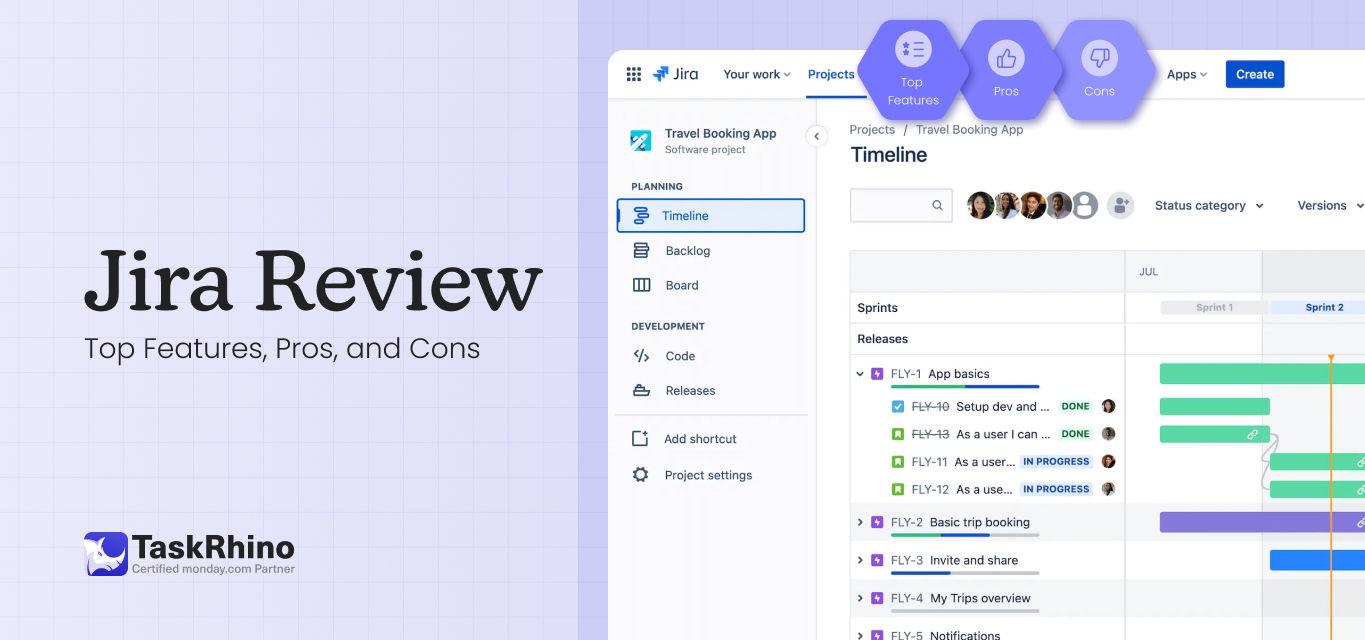
Jira Review 2025: Complete Analysis for Project Management Teams
Summary: This detailed Jira review covers its features, pros, cons, and pricing. This blog explores how Jira work management supports agile methodology handles, third-party integrations, and other advanced features.
Jira has assembled over 15,000 reviews on popular platforms like G2 and Capterra, with an impressive 4.4-star rating on Capterra. With such a substantial user base, it’s clear that many teams recommend Jira for managing software development projects and enhancing collaboration.
This powerful platform is designed to streamline project tracking and boost productivity, whether you’re part of a software development team or managing complex workflows.
So, what makes the Jira platform stand out among the competition?
What exclusive features support its agile approach to project management?
Keep reading to know the features provided by Jira – the functionalities that make it a preferred choice for so many teams.
How We Analyzed Jira?
We thoroughly analyzed the Jira work management tool based on its key features, including task management, integrations, reporting, and ease of use. To provide insights rooted in real-life experiences, we considered user reviews from trusted sources like Capterra and G2. Additionally, we examined Jira’s customer support, pricing models, and overall user experience to provide a detailed review of this project management tool.
What is Jira Software?
Jira is one of the Atlassian products. It is a robust tool designed primarily for software development teams, although it has evolved to serve various industries, including marketing teams. It enables organizations to manage software development projects effectively, streamline workflows, and track progress in real time.
With its powerful features, Jira allows teams to create customizable workflows, set priorities, and collaborate seamlessly across multiple projects.
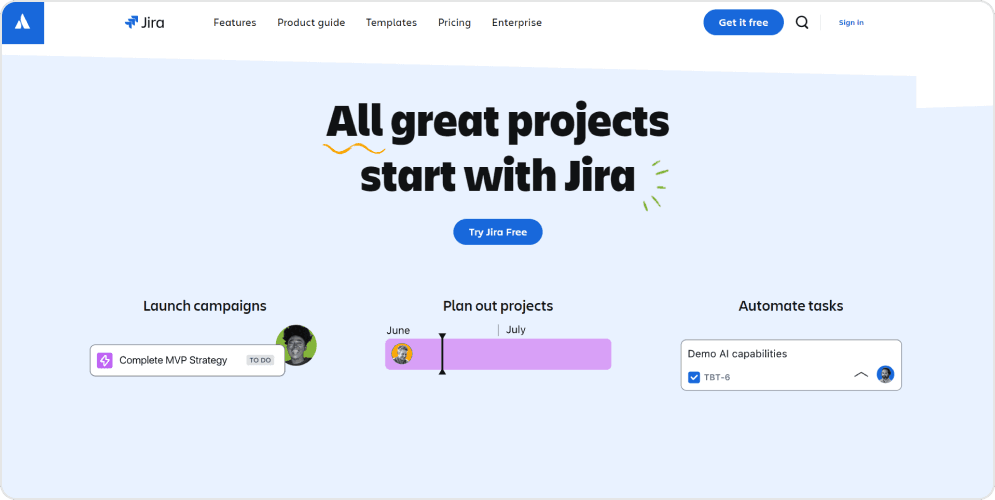
Jira’s user-friendly interface enables teams to set up their Jira instance quickly, allowing them to start managing projects in just a few seconds.
Its agile approach particularly benefits teams practicing Scrum or Kanban methodologies, providing essential features like sprint planning, backlog management, and reporting.
By utilizing the power of Jira, organizations can enhance their project management capabilities and ensure that their teams remain productive and focused on their goals.
Let’s have a look at the advantages and drawbacks of using Jira:
Pros & Cons of Using Jira as Your Project Management Software
Jira software is designed to handle the complexities of software-building projects. It offers tools supporting every development lifecycle stage, from planning to deployment.
Here are some of the benefits of Jira work management:
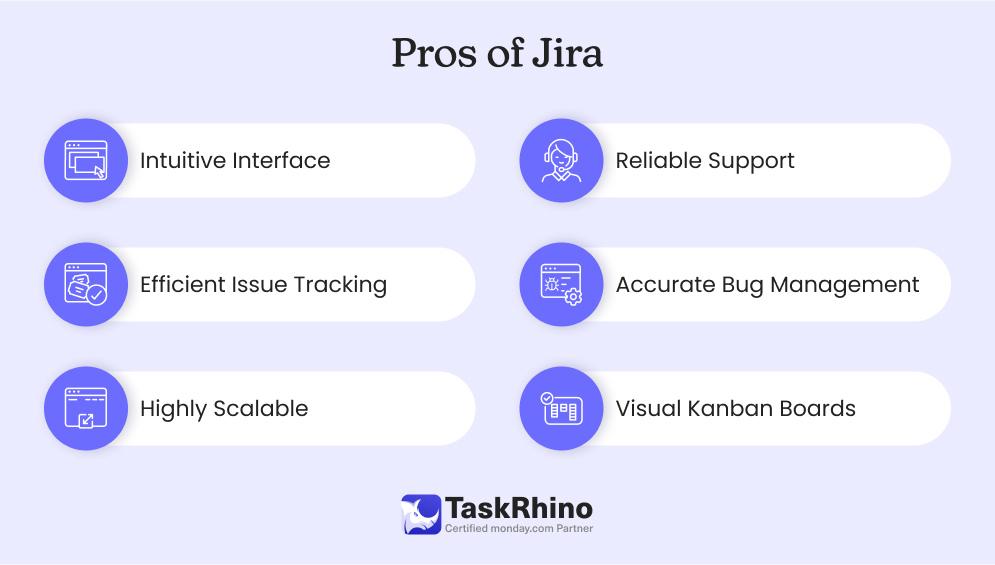
- User-Friendly Interface: Jira’s intuitive interface is easy to navigate, making it accessible for all skill levels. Its extensive documentation and tutorials further support a smooth learning curve.
- Efficient Issue Tracking: Originally designed for bug tracking, Jira remains highly effective for managing and resolving issues. Its extensive reporting tools provide valuable insights into issue resolution efficiency.
- Highly Scalable: Jira’s flexibility allows it to scale with your project, from small personal tasks to large enterprise projects, adapting to evolving needs.
- Reliable Support: Atlassian provides robust customer support, complemented by a large community of users who offer additional assistance and resources.
- Easy to Locate, Track, and Record Bugs: Jira simplifies bug management by allowing users to log, assign, and track bugs throughout their lifecycle. This ensures quick resolution and effective communication about issues.
- Visually Attractive Kanban Boards: Kanban boards visually represent workflows, allowing teams to see tasks at different stages and identify process inefficiencies. They enable real-time updates and better workflow management.
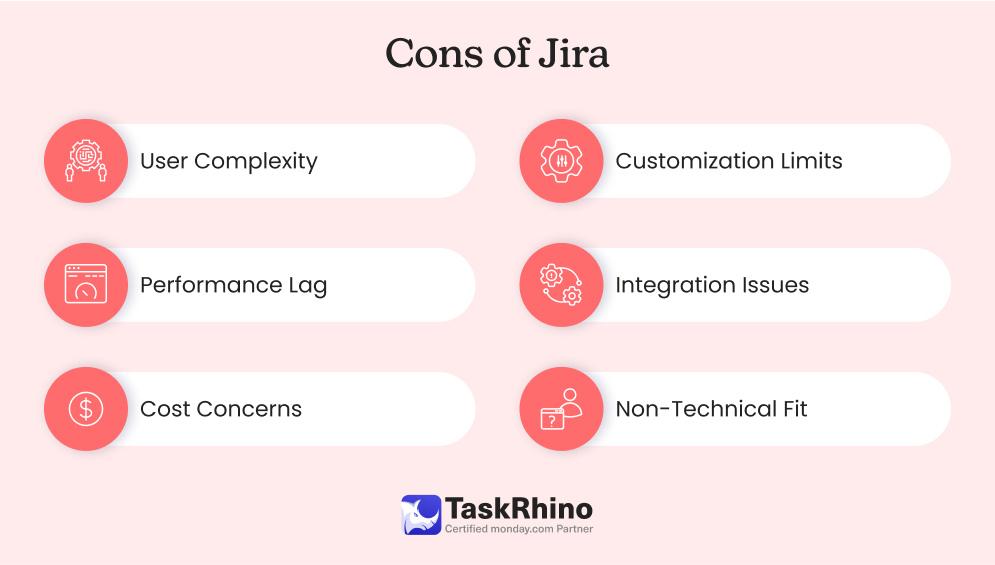
- Complexity for New Users: The wealth of features can overwhelm newcomers or non-developers, leading to a steep learning curve when setting up custom workflows and configurations.
- Performance Issues: Some users report that Jira can be sluggish when managing multiple projects, which can hinder productivity.
- Cost Considerations: While there’s a free plan, costs can escalate for larger teams, especially when opting for additional features or premium support.
- Limited Customization: Certain reporting features may have restrictions, preventing teams from personalizing them to their specific workflows.
- Integration Challenges: Although Jira supports various integrations, users have occasionally experienced difficulties connecting it with other tools, disrupting established workflows.
- Not Ideal for Non-Technical Teams: Jira was primarily designed for software building processes, Jira may not suit the needs of non-technical teams, such as sales or customer relationship management processes.
Considering these cons, it is essential to determine if Jira aligns with your team’s specific requirements and workflows. The right tool will guide you towards productivity but a tool that is not suitable for your needs will increase your workload and build more pressure.
Get More Done with Less Effort
Our experts help you maximize productivity and streamline workflows with ease.
Core Features of Jira
Jira provides essential features for managing development projects and boosting team collaboration. But does it reach up to your team’s requirements?
Keep reading to find out the key features of Jira:
1. Issue Management & Bug Tracking
Jira’s issue management system allows teams to track every task, bug, and project element from start to finish. By breaking down large projects into smaller tasks and stories, Jira ensures efficient workflow management, making prioritizing and completing tasks easier.
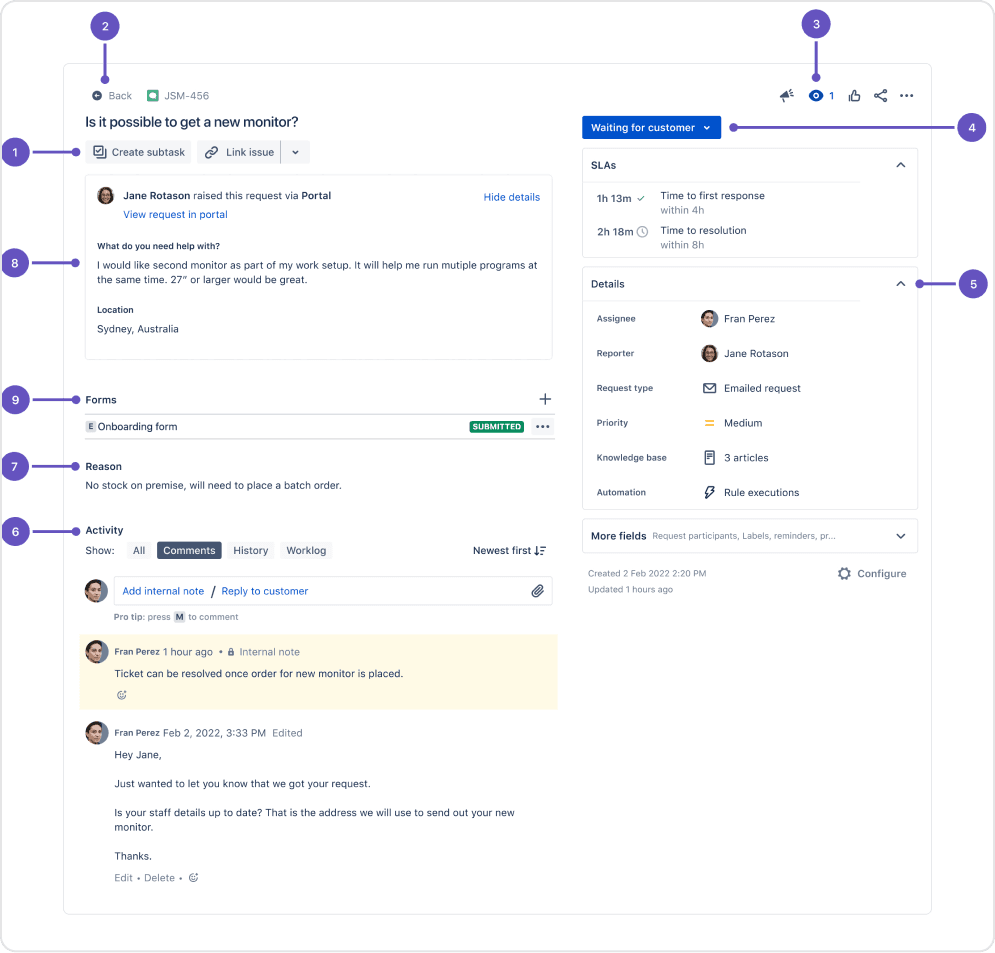
Initially designed for bug tracking, Jira excels in helping teams record, track, and fix bugs quickly. With a dedicated bug-tracking template, all issues can be viewed on a single board, enabling seamless prioritization and resolution. This visibility ensures that critical bugs are addressed promptly, enhancing overall project quality.
2. Agile Development
Jira is designed with Agile development in mind, offering built-in Scrum, Kanban, and bug-tracking boards to cater to different project needs.
Whether you’re managing software development or other projects like Go To Market, Recruitment, or Budgeting, Jira’s flexible boards allow teams to choose the best methodology—Scrum, Kanban, or a hybrid like Scrumban.
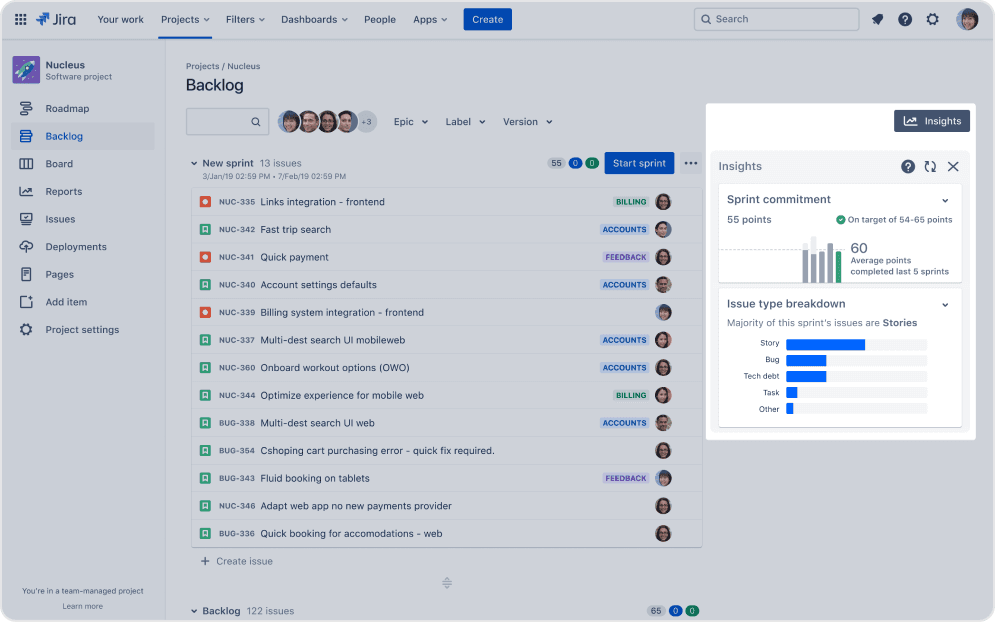
When starting a project, Jira prompts you to select either a Scrum or Kanban board, automatically setting up the framework for your chosen methodology.
This makes it easy to manage sprints, track issues, and log progress using various views like user stories and story points.
Agile is at the core of Jira’s functionality, ensuring smooth integration and utilization of all its features to optimize project workflows.
3. Roadmaps
Jira’s Roadmaps offer a high-level visual summary of a project’s goals, timelines, and priorities, making it easy for stakeholders to understand the overall progress at a glance.
This feature helps managers prioritize critical tasks, ensuring the most valuable work is delivered first.
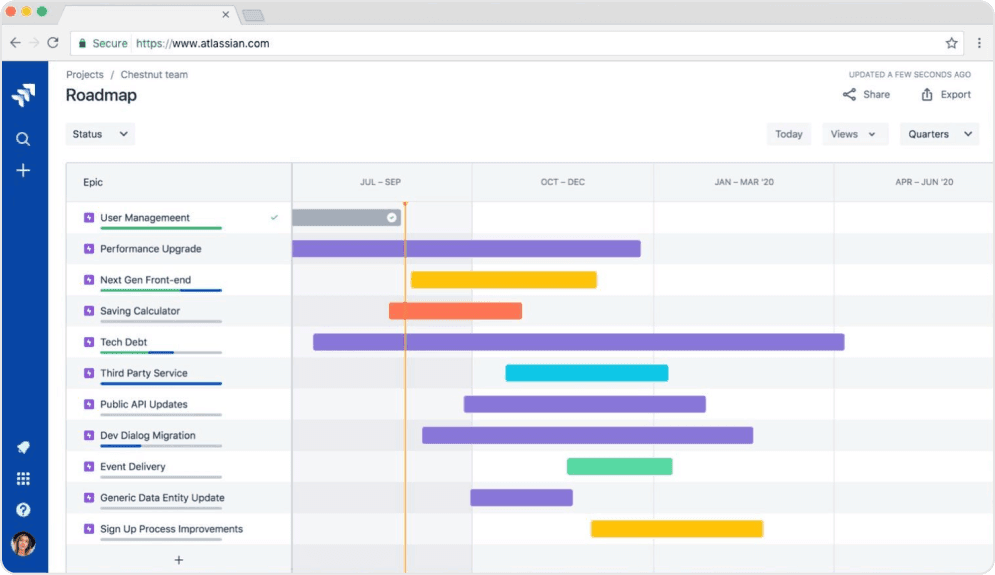
Roadmaps also facilitate alignment around project objectives, promoting transparent communication and accountability across teams. With Jira, you can create detailed timelines, set direction guidelines, and segment your development lifecycle.
Additionally, Roadmaps can be exported to formats like PDF or CSV for easy sharing, making them an essential tool for planning and tracking progress across multiple sprints.
4. Reporting
Jira offers a suite of over 15 reports that provide real-time insights into your team’s performance, from planning to final delivery. Reports like sprint reports, burndown charts, control charts, and time tracking reports allow project managers to monitor progress, identify bottlenecks, and re-prioritize tasks as needed.
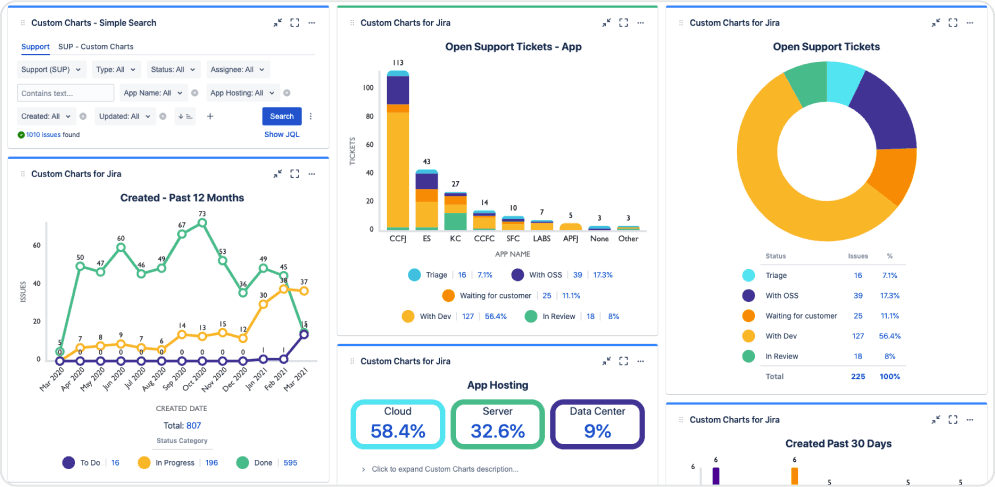
Its visually rich reports help manage projects more effectively and can be shared with clients. Jira’s customizable dashboards also offer a quick overview of key project metrics, making tracking performance easier for decision-makers of the projects.
For teams seeking to upgrade their reporting game, we recommend checking out monday.com.
To be more sure, consider checking out the blog post for a strategic comparison: monday vs Jira: Comprehensive Comparison of Project Management Giants
5. Integrations and Add-ons
Jira offers extensive integration capabilities, connecting with over 3,000 tools, apps, and platforms to enhance its usability and streamline workflows. Whether you’re using project management, CRM, or development tools, Jira’s integrations help unify your systems for seamless data sharing and communication.
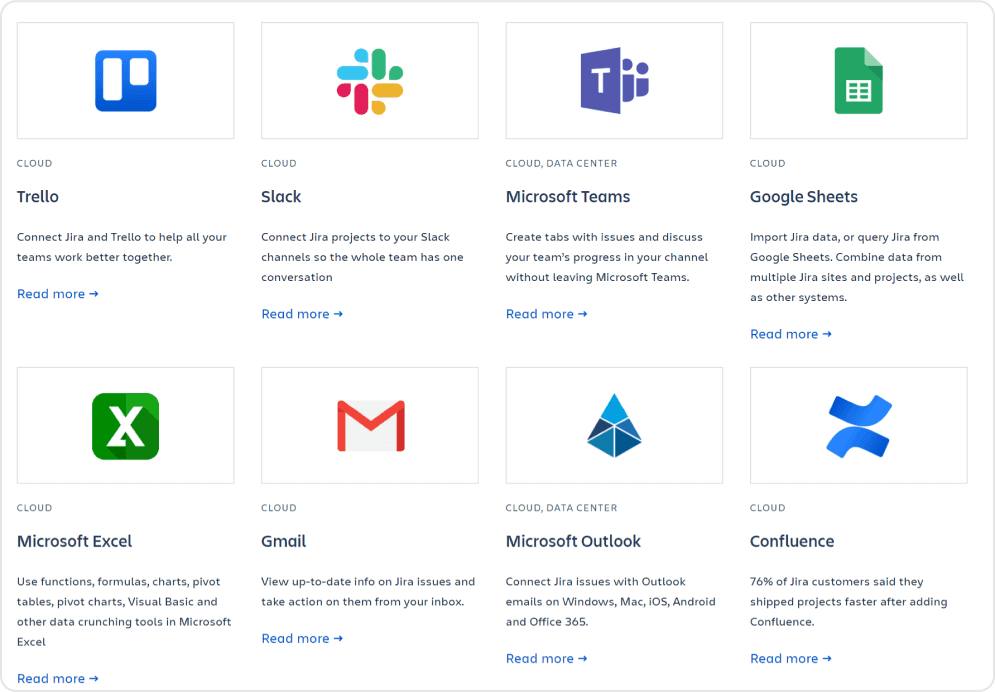
Additionally, Jira’s flexibility is amplified by over 800 add-ons in the Atlassian Marketplace.
These plugins, such as ScriptRunner, Zephyr for Test Management, and Tempo Timesheets, allow you to customize workflows and extend Jira’s functionality to suit your business needs.
6. Mobile Access
Jira is accessible on mobile devices through the Jira Cloud app, providing users flexibility. While the app offers a streamlined experience for creating tasks, leaving comments, attaching files, and reviewing boards, it retains the drag-and-drop interface familiar from the web version.
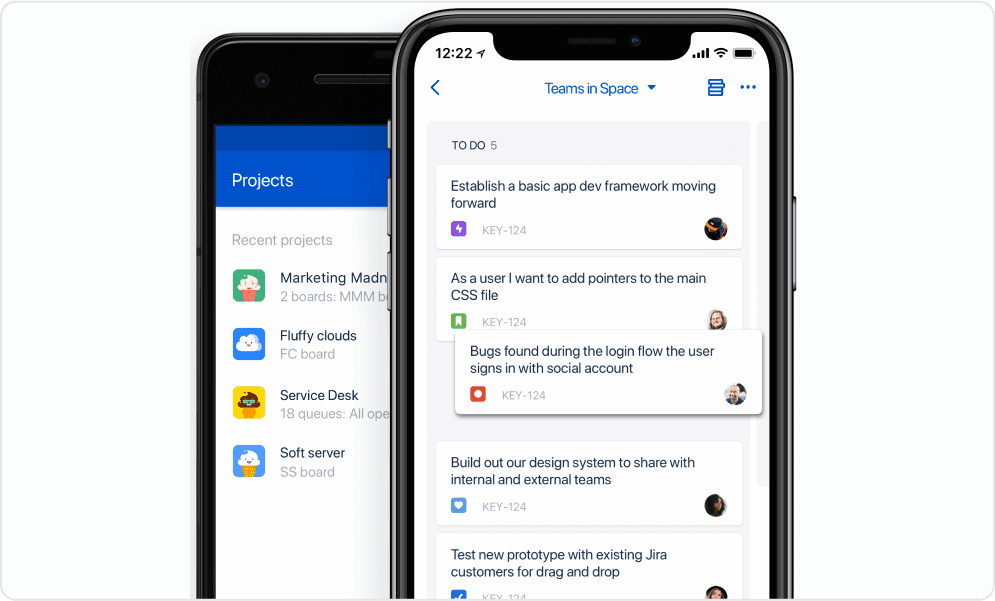
The app presents data in a more straightforward format, which may require significant scrolling to view all information.
Although managing complex projects is generally more comfortable on a desktop, the mobile app is a valuable tool for staying updated on issues and receiving notifications about updates.
7. Customization
One of Jira’s standout features is its customization capabilities. Every team has a unique way of working, and Jira allows extensive customization to match these needs.
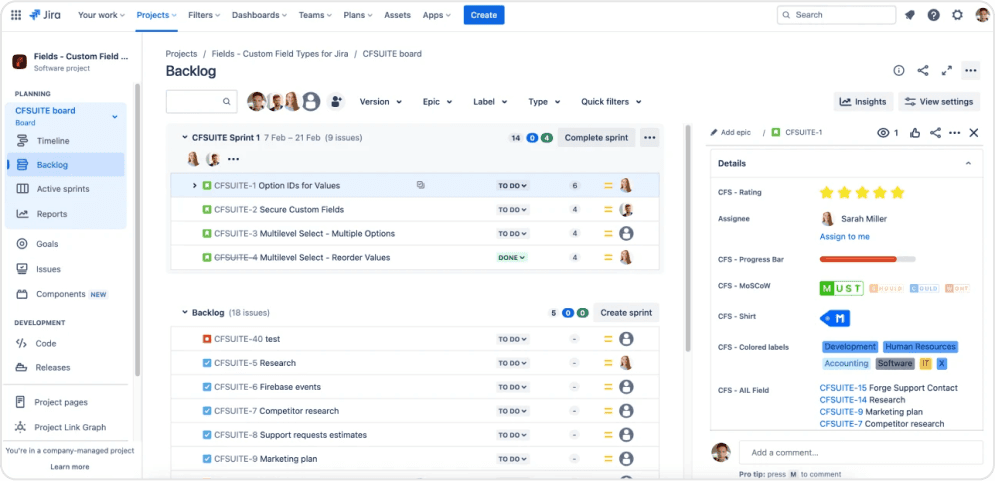
Jira excels in customization, allowing teams to tailor the platform to their needs. You can create custom fields, workflows, and issue types to configure Jira to align with your project requirements.
8. Security
Jira prioritizes data security with features designed to protect sensitive information. Key security measures include customizable user roles, permissions, password policies, and two-factor authentication.
All data is encrypted in transit, ensuring industry-standard protection against unauthorized access.
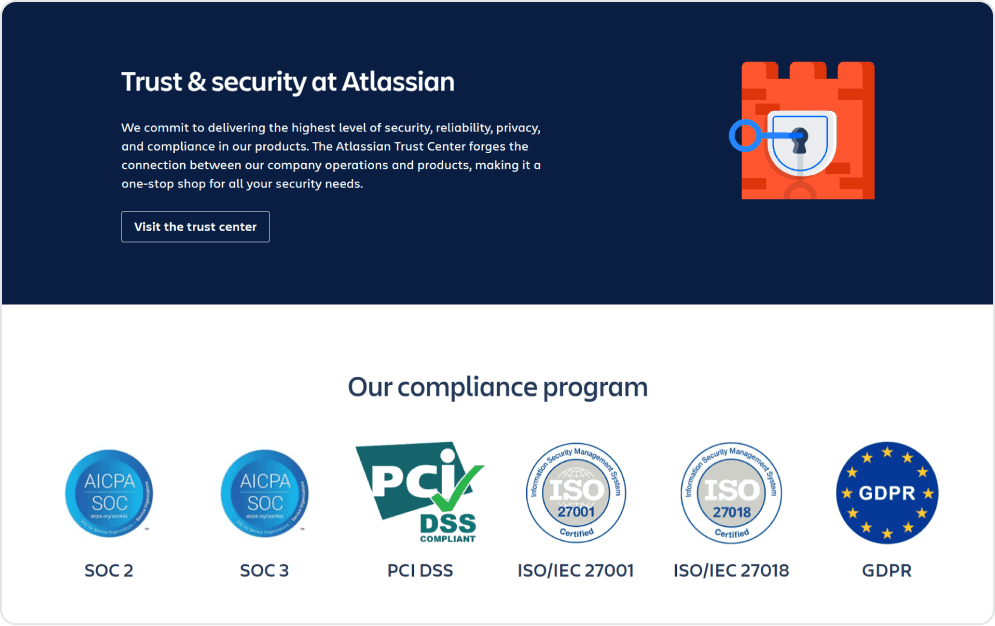
Jira complies with significant standards and regulations such as GDPR, SOC 2 and 3, PCI/DSS, and ISO/IEC certifications.
For even better security, Atlassian Access offers additional features like single sign-on (SSO), SCIM, and Active Directory sync, which are available with the Enterprise plan.
9. Time Tracking
Time tracking is crucial in agile development, enabling accurate estimates by comparing tasks with historical data.
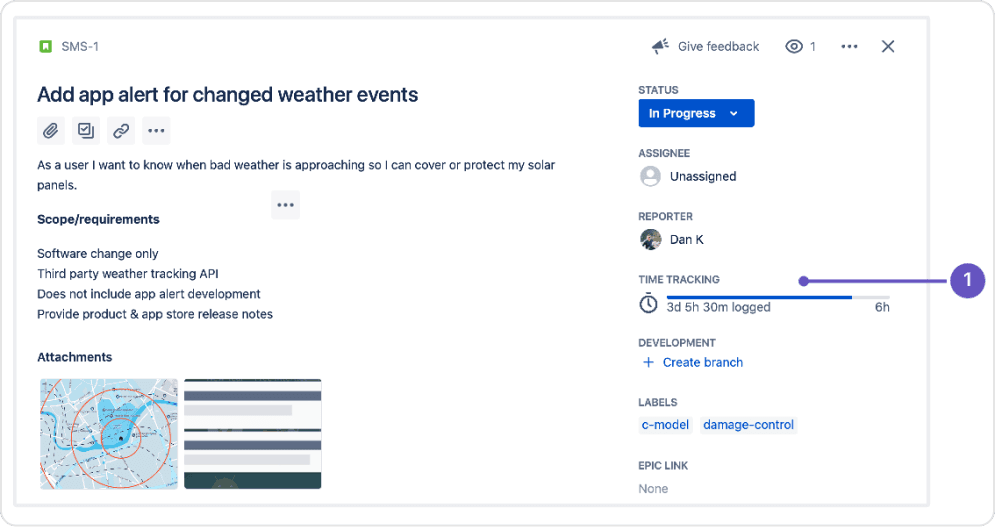
Jira’s time-tracking feature uses a color-coded system to provide clear insights into issue management.
- Blue indicates the estimated time to resolve an issue
- Orange shows the remaining time
- Green represents the actual time spent.
This system helps project managers and agile teams monitor progress and manage deadlines effectively.
Additionally, Jira’s time-tracking function facilitates the generation of detailed reports, offering valuable insights into project time allocation.
10. Automation
Jira’s automation rules can streamline repetitive tasks, saving time and reducing the risk of errors. Whether auto-assigning issues or sending notifications based on specific triggers, Jira’s automation tools enhance productivity.
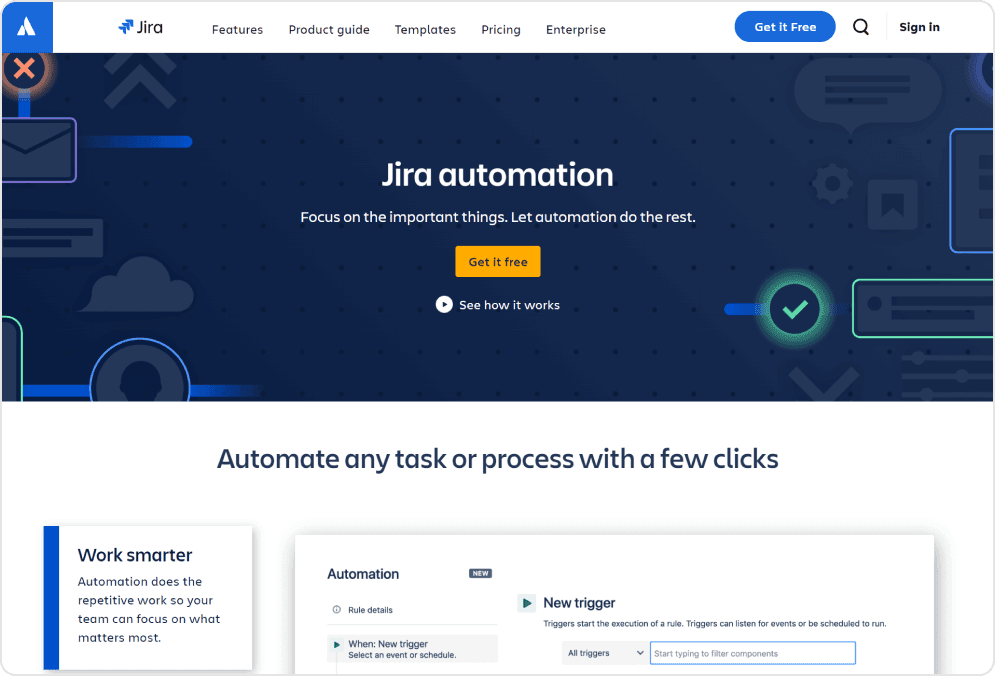
Moreover, teams can create workflows that reflect their process, from simple task tracking to complex multi-step processes. These workflows can be modified as the project evolves.
11. Customer Support
Jira provides different levels of customer support depending on the plan.
Let’s have a look at how pricing differs from the after-sales service by Jira:
| Plan | Price | Customer Support Service |
|---|---|---|
| Free | $0 | Atlassian’s community support forum & online resources |
| Standard | $7 | Email and chat support during local business hours |
| Premium | $14 | 24/7 email and chat support |
| Enterprise | Custom | 24/7 phone, email, & chat support, dedicated account manager |
| Jira Service Desk Add-on | $20 | Additional support for IT and customer service teams, featuring ticketing, SLAs, and a Knowledge Base |
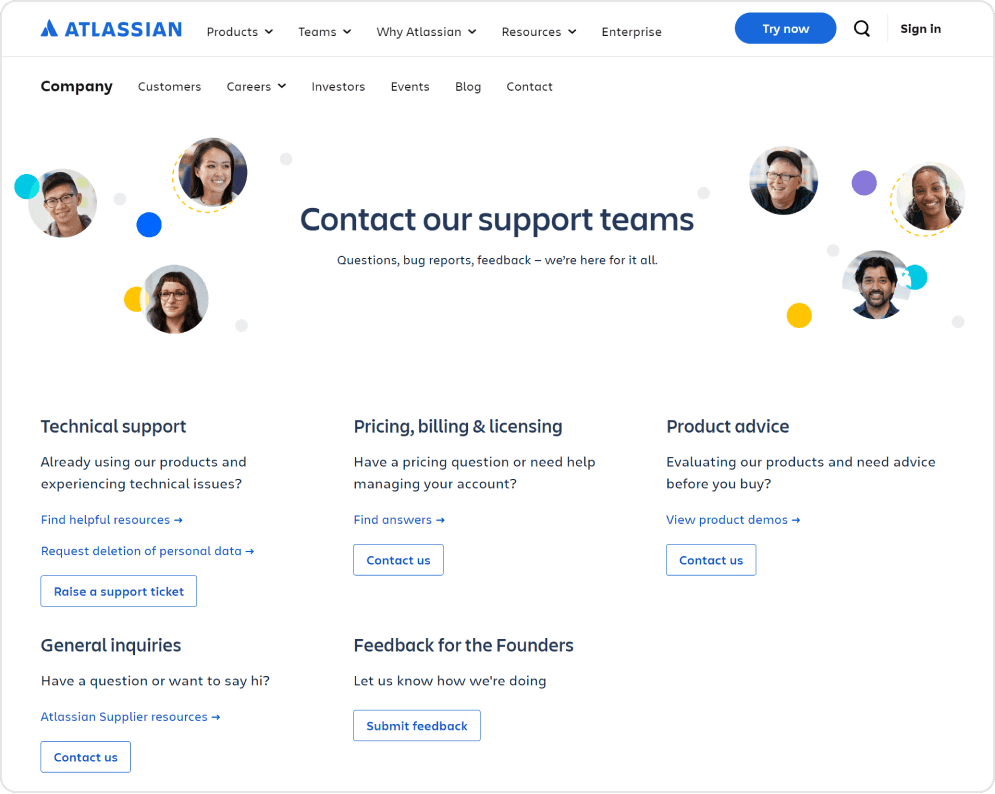
Jira does offer a strong set of features and flexible customer support options, but it may not always measure up to other platforms. Some users find its complexity challenging, especially when compared to more user-friendly alternatives that provide a smoother experience.
For teams looking for seamless project management and reporting without a steep learning curve, exploring Jira Alternatives could be more beneficial.
Ultimately, the best choice will depend on your team’s specific needs and preferences.
Many people tout Jira as the ideal tool for agile users, but what makes it stand out in this regard?
Let’s explore the reasons why Jira is often regarded as the best choice for agile management.
Why Jira is Best for Agile Teams
Agile teams thrive on flexibility and the ability to adapt to changes quickly. Jira is built with agile methodologies, making it an ideal tool for teams following Scrum, Kanban, or a hybrid approach.
- Planning and Tracking: Jira’s planning features allow project managers to create detailed roadmaps, assign tasks, and set priorities. Agile boards make it easy to track progress and adapt to changes in real time.
- Issue Management: Managing software projects often involves dealing with bugs and issues. Jira’s issue-tracking system is one of the best in the industry, enabling teams to log, categorize, and resolve problems efficiently.
- Collaboration: Software development is a collaborative effort. Jira facilitates team members’ communication, integrates with tools like Slack, and ensures everyone is on the same page.
- Task Management: Beyond issue tracking, Jira’s task management features help organize and prioritize work. Tasks can be broken down into smaller sub-tasks, assigned to team members, and monitored to completion.
- Scrum Support: Jira’s Scrum boards are designed to manage sprint planning, backlog grooming, and burndown charts, providing a clear view of progress and areas that need attention.
- Kanban Boards: For teams that prefer a continuous workflow, Jira’s Kanban boards offer a visual representation of tasks. They allow for easy tracking of work in progress and identification of blockages.
- Agile Reporting: Jira’s agile reporting tools, such as velocity charts, sprint reports, and cumulative flow diagrams, give teams the data they need to make informed decisions and improve processes.
- Custom Fields and Screens: Jira allows custom fields to be added to capture specific data points, and custom screens ensure that team members see only the information relevant to their tasks.
Jira is widely recognized for its agility, but it might not work for all teams. Thankfully, several alternatives offer unique features.
Let’s explore some standout options to help you discover the best fit for your project management needs.
Alternatives to Jira
While Jira is a leading PM tool, it’s not the only option available. Jira alternatives might better suit certain teams, depending on their specific needs.
| Jira Alternatives | Known for | Capterra Ratings | Free Plan | Paid Plan Starting Price | Mobile App |
|---|---|---|---|---|---|
| monday.com | Teams seeking visual project tracking, All-in-one Work Management | 4.6/5 | ✅ | $9 per user | ✅ |
| Trello | Smaller teams or simpler projects | 4.5/5 | ✅ | $6 per user | ✅ |
| Asana | Teams of all sizes | 4.5/5 | ✅ | $10.99 per user | ✅ |
| ClickUp | Adaptable PM software | 4.7/5 | ✅ | $5 per user | ✅ |
The Bottom Line of Jira Review
Jira project management software is a powerful tool for managing complex projects, particularly in software development. With its strong support for agile methodologies, strong issue tracking, and extensive customization options, Jira software is an excellent choice for teams handling intricate workflows.
However, its advanced features and learning curve may only suit some teams, especially those with more straightforward project management needs. Before fully committing, take advantage of Jira’s free plan to explore its features and determine if it aligns with your team’s requirements.
Be more confident with consulting with experts like TaskRhino can provide tailored advice on selecting the best project management tool for your business.
Maximize Performance with Our Expert Consulting Services
Get expert help with implementation and training…
Frequently Asked Questions
How do I get started with Jira?
To start with Jira software, sign up for a free plan to explore its features. You can create projects using templates or customize them to fit your needs. Begin by setting up your workflows, assigning tasks, and integrating with other tools your team uses. If you need expert assistance, consider contacting TaskRhino to help with your specific requirements.
What are the main disadvantages of Jira?
Jira’s main disadvantages include its steep learning curve, complex interface, and potentially high costs, especially for smaller teams or more straightforward projects.
What is Jira best used for?
Jira is best used for managing complex projects, particularly in software development. It strongly supports agile methodologies, issue tracking, and customizable workflows.
Which is the best Jira alternative?
monday.com is the best Jira alternative, offering an intuitive interface and versatile features that cater to various project management needs. For personalized guidance, consider consulting with TaskRhino to set up Jira effectively for your team.
Is Jira one of the top project management tools?
Yes, Jira is considered one of the top project management tools, especially for software development teams that need robust issue tracking and agile support.
How customizable are Jira workflows?
Jira workflows are highly customizable, allowing you to tailor processes, create custom fields, and integrate with various tools to fit your team’s specific needs.
Editor's Choice
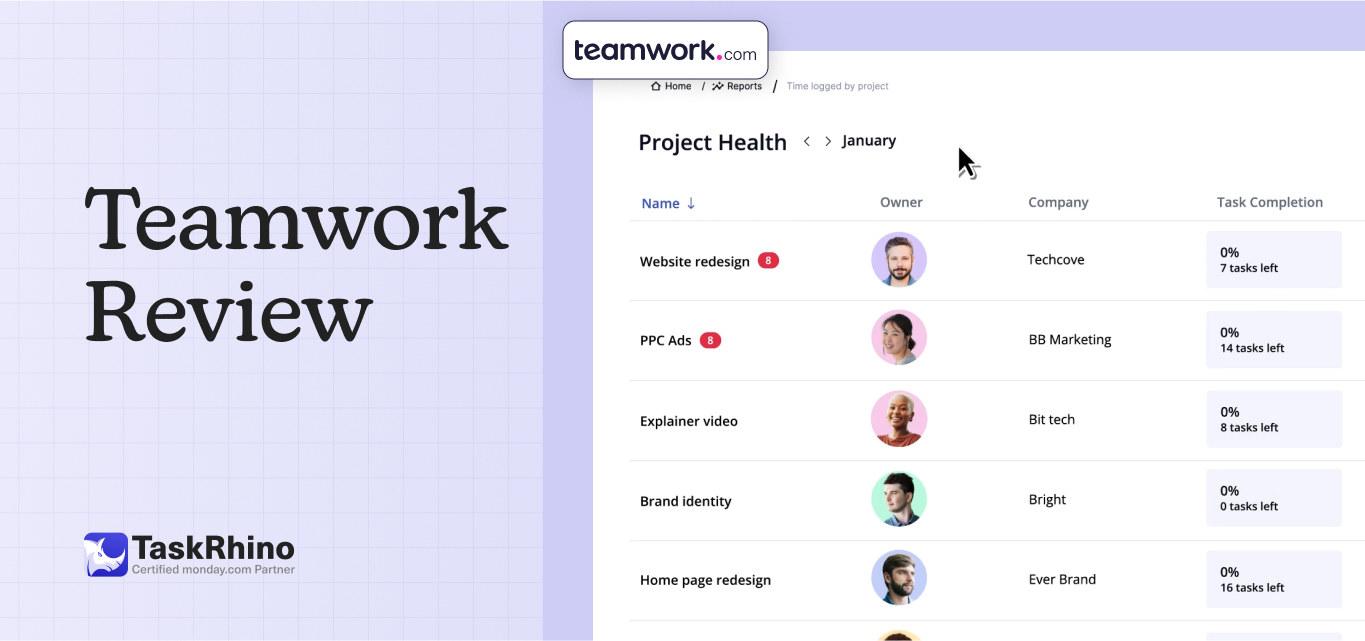
Teamwork Review: The Ultimate Tool for Efficient Project Management
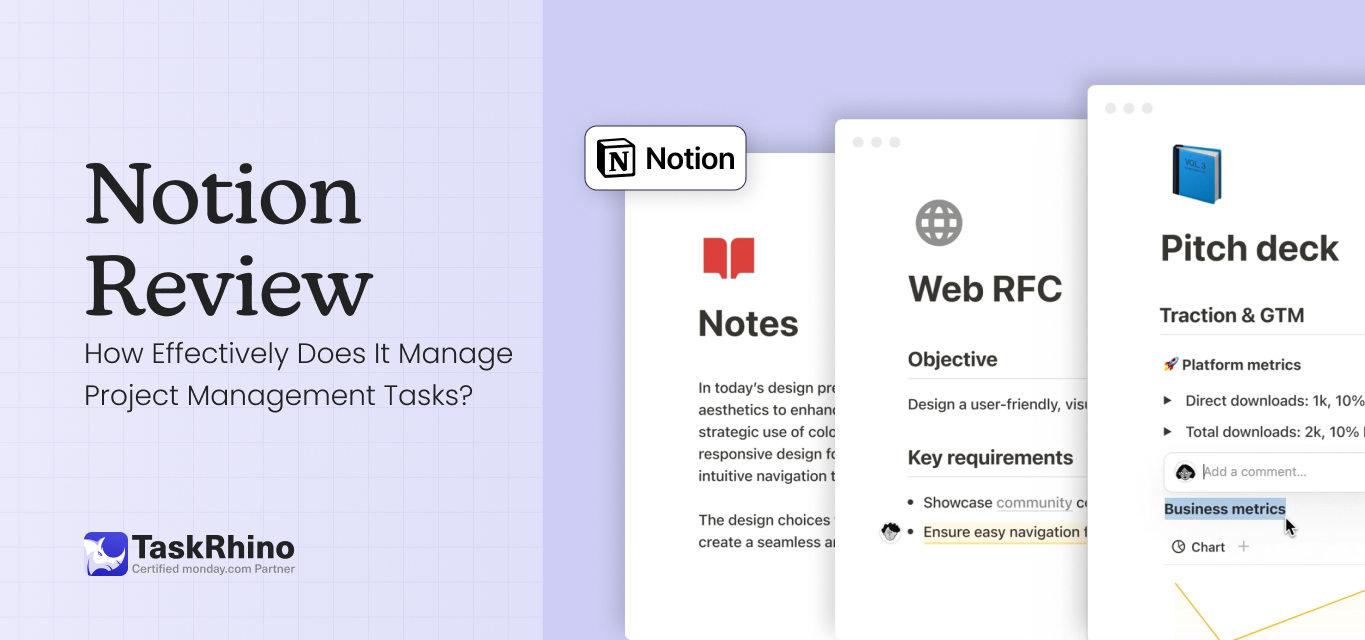
Notion Review: How Effectively Does It Manage Project Management Tasks?

Asana Review 2025: Complete Features, Pricing & User Experience Analysis
